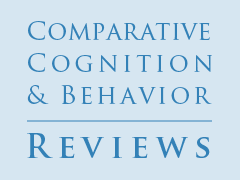Optimal and Non-optimal Behavior Across Species
by Edmund Fantino,
University of California
Reading Options:
Download/Read PDF | Add to Endnote
Abstract
We take a behavioral approach to decision-making and, apply it across species. First we review quantitative theories that provide good accounts of both non-human and human choice, as, for example, in operant analogues to foraging (including the optimal diet model and delay-reduction theory). Second we show that for all species studied, organisms will acquire observing responses, whose only function is to produce stimuli correlated with the schedule of reinforcement in effect. Observing responses are maintained only by “good news”: “no news” is preferred to “bad news”. We then review two areas of decision-making in which human participants (but not necessarily non-humans) tend to make robust errors of judgment or to approach decisions non-optimally. The first area is the sunk-cost effect in which participants persist in a losing course of action, ignoring the currently operative marginal utilities. The second area is base-rate neglect in which participants overweight case cues (such as witness testimony or medical diagnostic tests) and underweight information about the base rates or probabilities of the events in question. In both cases we argue that the poor decisions we make are affected by the misapplication of previously learned rules and strategies that have utility in other situations. These conclusions are strengthened both by the behavioral approach taken and by the data revealed in cross-species comparisons.
Keywords: choice, optimal diet model, delay-reduction theory, observing responses, sunk-cost effect, base-rate neglect
Fantino, E. (2012). Optimal and Non-optimal Behavior Across Species. Comparative Cognition & Behavior Reviews, 7, 44-54. Retrieved from https://comparative-cognition-and-behavior-reviews.org/ doi:10.3819/ccbr.2012.70003
